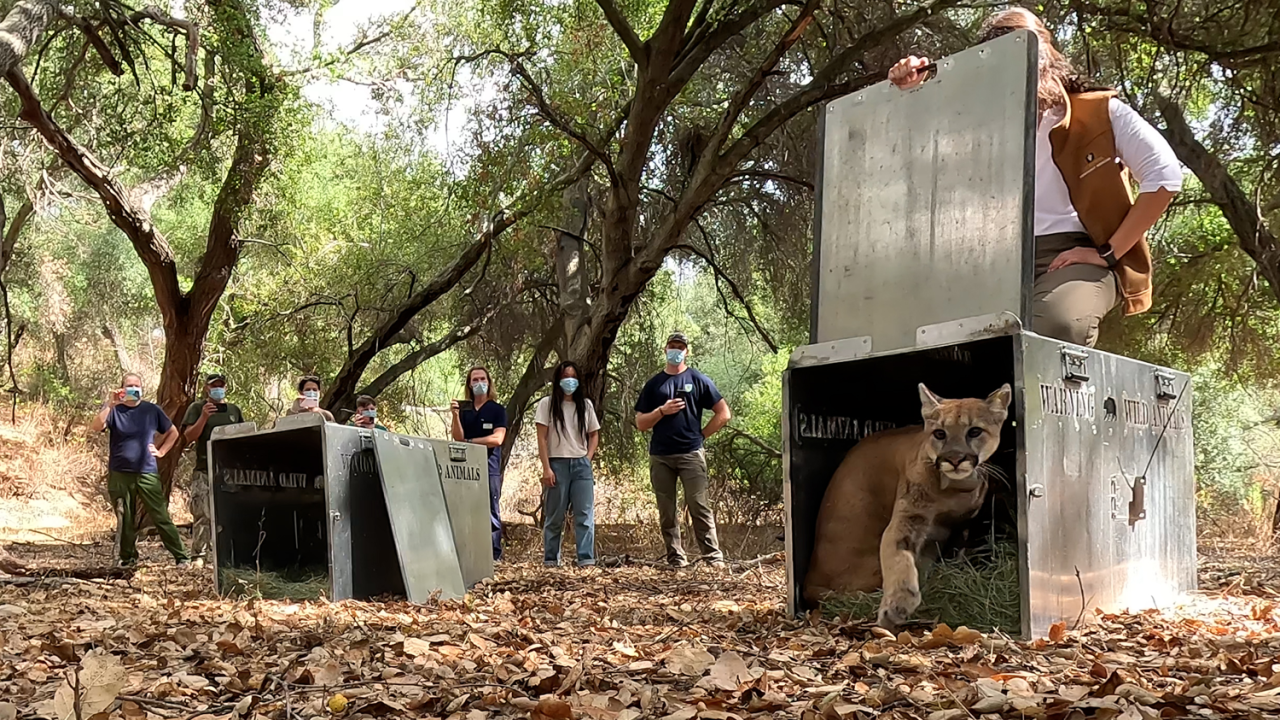
Walk on the Wild Side
For more than 50 years, UC Davis has pioneered the field of training veterinarians to work with both free-ranging and captive wildlife.
It was a typically warm Southern California morning on the cusp of fall. Jane Riner, DVM ’22 had finished final blood draws for her two young patients. They were ready to be outfitted with tracking collars and placed in crates where they would recover from short- term chemical immobilization before being released back to the wilds of San Diego County.
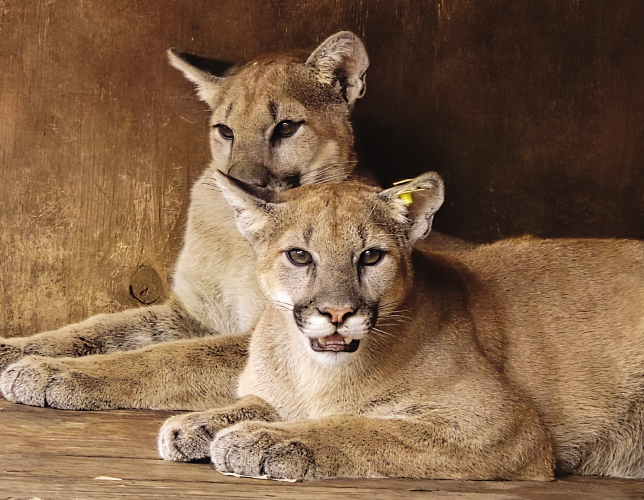
The mountain lion kittens had been found orphaned and malnourished in March before being safely captured by the school’s California Carnivores Program team in coordination with the California Department of Fish and Wildlife (CDFW). The cubs were transferred to the San Diego Humane Society’s Ramona Wildlife Center for rehabilitation that followed a strict protocol designed to limit human contact and encourage natural behavior.
For Riner, who is in her second year of a Free-Ranging Wildlife Health Residency jointly managed by the school and CDFW, working as a veterinarian focusing on issues such as these is a dream come true. As an undergraduate nearly a decade ago, she had joined a CDFW mountain lion health study that involved necropsies at the CDFW Wildlife Health Lab’s Rancho Cordova facility. Along with Deana Clifford, DVM ’99, MPVM ’01, Ph.D. ’06; Jaime Rudd, Ph.D. ’19; and other female team members, they were dubbed the Puma Pathology Queens by the Sacramento Bee. Over a span of two years, they were tasked with evaluating the health of more than 500 deceased California mountain lions—who had often succumbed to vehicle strikes, depredation, or disease.
Riner went on to veterinary school at UC Davis and spent time working in emergency and exotic medicine before becoming an associate zoo veterinarian at an AZA-accredited facility in Oregon known for cheetah breeding and conservation.
“I feel like I’ve come full circle with this residency opportunity,” Riner said. “Working with large cats is something I’ve always truly enjoyed and now I have a more active role in studying the population health of California’s mountain lions, looking at major impacts and how can we optimize their health and longevity.”

Committed to Wildlife Health and Conservation
Karen (shown above with Dean Emeritus Bennie Osburn) and Phil Drayer are loyal and long-time friends of the school with a shared passion and commitment to wildlife health. Their visionary support for the Karen C. Drayer Wildlife Health Center has been critical for addressing complex issues of conservation and wildlife health in a changing world, and they have been instrumental in shaping the center since its inception. Through their heartfelt generosity, the Drayers established a perpetual endowment that ensures the center’s excellence well into the future. The Drayers are also the patrons of the Phil & Karen Drayer Wildlife Health Center Fellowship Award.
During Riner’s tenure with the CDFW Wildlife Health Lab as a scientific aid before entering veterinary school, she met Andrew Di Salvo, DVM, MPVM ’19 who was enrolled in the residency program as its inaugural participant. Each resident works directly with and under the four CDFW Wildlife Health lab veterinarians during the program’s first year, in essence becoming a fifth state wildlife vet. The second year is spent conducting research toward a Master of Preventive Veterinary Medicine (MPVM) and working with faculty at the school’s Karen C. Drayer Wildlife Health Center (WHC). Upon successful completion, the resident may opt to seek specialty board certification in zoological or preventive veterinary medicine or employment in wildlife health or One Health disciplines.
“I thought, wow, that’s incredible! The training focused not only on clinical medicine for free-ranging wildlife, but included other critical components like field immobilization, public perspectives, policy, research, disease prevention, and pathology,” said Riner, who is studying feline leukemia virus (FeLV) in mountain lions for her MPVM. “I knew it would be a long and winding road but working alongside the resident and seeing the value of the program planted a seed in my mind that this was a path I wanted to pursue as well.”
Unique Residency
UC Davis is the only veterinary school in the country to provide post-DVM training focused solely on free-ranging wildlife. The residency program is jointly offered through the WHC and the CDFW and emerged from a history of strong collaboration with the state agency, explained Mike Ziccardi, DVM ’93, MPVM ’94, Ph.D. ’01, veterinary epidemiologist and executive director of the school’s One Health Institute (OHI).
“UC Davis is arguably the birthplace of wildlife and zoological medicine,” said Ziccardi. "In fairness, both grew out of national demand and with parents from many institutions, but the first zoological medicine residency was here and now houses the first solely free-living wildlife residency in conjunction with a government conservation agency.”
For more than 30 years, Murray Fowler, DVM—widely recognized as a father of zoological medicine—taught third-year veterinary students 10-week zoological medicine and free-ranging wildlife health courses on an alternating year cycle. When Murray retired in 1991, veterinary parasitologist Walter Boyce, DVM, Ph.D., took over the wildlife course and created a summer field course in collaboration with CDFW.
UC Davis is arguably the birthplace of wildlife and zoological medicine.”
—Dr. Mike Ziccardi
Boyce, with the support of Dean Emeritus Bennie Osburn, DVM, Ph.D. ’65 was also instrumental in helping to create a wildlife health program at UC Davis (after convening a critical workshop with experts in the field) to better address the training of future wildlife veterinarians. This program incorporated new approaches to the wildlife curriculum combined with funding dedicated to student-led research projects.
Boyce and Jonna Mazet, DVM ’92, MPVM ’92, Ph.D. ’96—a veterinary epidemiologist and product of the school’s wildlife health program— became co-directors of the emerging WHC, leading the school’s center of excellence for decades until Mazet’s establishment of the OHI in 2009. At that point, the WHC came under the umbrella of the institute, and Ziccardi and Kirsten Gilardi, DVM ’93—two additional participants in the program—were named co-directors.
Ziccardi was also serving at the time as director of the Oiled Wildlife Care Network (OWCN), a key program of the WHC in partnership with the CDFW. His experience as an oil spill response veterinarian from the early days of his career was instrumental in building the OWCN into an internationally recognized leader in oil spill response with more than 40 member organizations throughout California—including world-class aquaria, universities, scientific organizations and rehabilitation groups.
Projects and programs within the WHC focus on the health and conservation of free-ranging and captive terrestrial, aquatic and marine wild animals. For the past 25 years, the service, training and research conducted through the center (including the California Carnivores Program) have helped diagnose wildlife health problems, conserve wildlife in their native habitats, restore ecosystem health, and address complex issues at the wildlife-human-animal interface.
While DVM students could choose a zoological medicine track beginning in the 1970s, there were few opportunities for them to work with free-ranging wildlife except for occasionally accompanying CDFW veterinarians in the field. So, Boyce, Gilardi and Ziccardi formalized an externship program in 2002 for 4th year students to get that experience. The four-week program accepts three to four students annually and is open to any DVM student across the U.S. and internationally. More than 100 nascent veterinarians have participated, including more than a dozen international students.
Jamie Sherman, M.S. ’18, DVM ’19 now serves as the externship coordinator in addition to her role as a wildlife veterinarian with the OWCN. She brings a unique perspective to the position as a recent graduate and early career wildlife veterinarian with strong connections and history with the CDFW.
“As someone who came up in the field of free-ranging wildlife health over the past decade, I see this externship as a way to ignite and share the joy I’ve had for this path with others,” Sherman said.
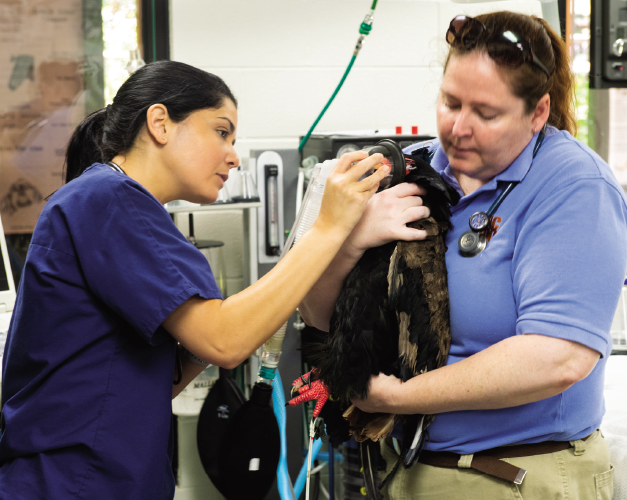
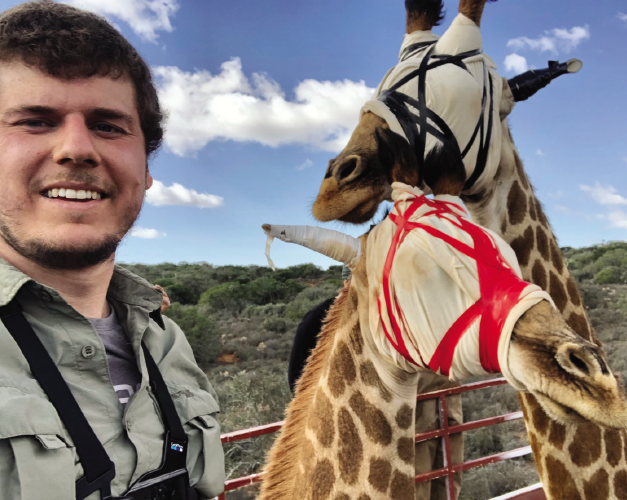
Passing the Baton
Dave Jessup, DVM, MPVM ’85 was hired in 1977 as the first wildlife veterinarian for CDFW after his mentor, Fowler, encouraged him to apply for the job. Since that time, he has ensured that UC Davis students and faculty have had opportunities to participate in CDFW field work.
Jessup had obtained his DVM in 1976 from Washington State University and wanted to work with wildlife. At the time, there wasn’t an internship or residency program available in that field. Instead, he came to UC Davis for a residency in pathology. But 10 months into that residency, he was hired by the CDFW.
During his 33-year career with the agency, Jessup earned his MPVM from UC Davis in 1985 and became board certified in Zoological Medicine. Along the way, he mentored many who followed in his footsteps including Mazet, Ziccardi and Gilardi, and has recently created an endowment to support the Free-Ranging Wildlife Health Residency.
“Early on, I realized one of the best things I could do for the future of wildlife veterinary medicine was to excite, inspire and mentor the young ones with a heart for it,” said Jessup, who now serves on the Dean’s Leadership Council. “I now find myself inspired, sustained and enjoying the enthusiasm and brilliance of these same young folks. The circle is unbroken.”
Among his many projects, Jessup developed new methods and drugs for safer capture of wildlife, described new wildlife disease problems in terrestrial animals, and investigated causes of morbidity and mortality in southern sea otters and other marine mammals and birds. He also worked with wildlife experts in Africa, where capture and conservation of wildlife was often more advanced than in the U.S.
He recently co-edited the award-winning textbook, Wildlife Disease and Health in Conservation, that combines theory and practice to explore the origins and impacts of wildlife diseases that are most pressing today. Jessup’s early collaboration with the school helped create the WHC and demonstrated that training programs developed as partnerships can lead to unparalleled educational opportunities.
“Dave was the very first veterinarian to encourage me to follow my dream to become a wildlife veterinarian,” said Gilardi, current WHC director. “It’s the individual who takes the time to mentor you that makes all the difference in your career path.”
Gilardi had been classmates with Ziccardi at UC Davis during veterinary school (Mazet was a year ahead of them). She credits being in the right place at the right time to study free-ranging wildlife curriculum under Boyce, who served as an important mentor. Gilardi went on to do a three-year residency at the Primate Center from 1993-96. After a short break to become a parent, Gilardi joined the WHC in a temporary position that led to a full-time job.
From 2000-2010, Gilardi was involved with the Envirovet Summer Institute—a program that trained more than 300 DVMs from around the world. The Rx One Health Field Institute was built on that legacy to expand horizons and exposure to other One Health professionals.
“I can’t think of another veterinary school in the world that has had a larger impact on who is practicing zoological and wildlife health,” said Gilardi, who has served since 2009 as a co-director of Gorilla Doctors, a partnership between the WHC and the Mountain Gorilla Veterinary Project.
In addition to the externship for DVM students and the three-year residency program for DVM graduates, the WHC offers a research fellowship for individuals in an advanced degree or residency training program. Funded by the generosity of Karen and Phil Drayer, this fellowship provides up to $5,000 in support of research aimed to improve the health and well-being of freeranging wildlife.
Hands-on Immersion
While each veterinarian in the free-ranging wildlife residency program has had a different path and focus, Riner said one thing holds true for all of them: the value of extensive hands-on experience. The first six months of her residency were spent mostly in the field, working in close partnership with biologists. She worked with martens in Lassen, mule deer in Big Bear, riparian brush rabbits in the San Joaquin Valley, sea otters in Moss Landing, bighorn sheep in the Eastern Sierra and Anza Borrego, Roosevelt elk in Humboldt County, and mountain lions in Southern California.
“That immersion is so important to an agency job,” she said. “We gain a tremendous amount of experience in such a short period of time. That’s why residents get matched to agencies so quickly—in fact, many of them are snatched up before completing all three years!”
As she watched the metal doors raise on the crates holding the young mountain lions and their dash into the oak scrub brush, Riner said she was still in a bit of awe at being part of the multi-agency team that made it possible for their successful release.
“I went from a CDFW aid to this unique position where every day brings something different,” Riner said. “You never know what call you’re going to get. I’m so grateful to everyone who has served as a mentor for me along this journey. There’s nowhere else I’d rather be.”
Learn more about various programs offered through the Karen C. Drayer Wildlife Health Center to train the next generation of wildlife health leaders.
Where Are They Now
Past Residents of the Free-ranging Wildlife Health Residency

Claire Butkus, DVM ’17, MPVM ’19 works as the Wildlife and Restricted Species Veterinarian for the California Department of Fish and Wildlife.

Megan Moriarty, DVM ’12, MPVM ’13, Ph.D. ’20 serves as the attending campus veterinarian for UC Santa Cruz after several years of working as a wildlife veterinarian with the Michigan Department of Natural Resources.
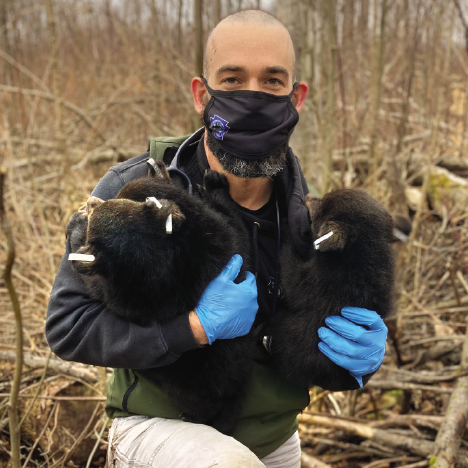
Andrew Di Salvo, DVM ’15, MPVM ’19 serves as a wildlife veterinarian for the Pennsylvania Game Commission.
